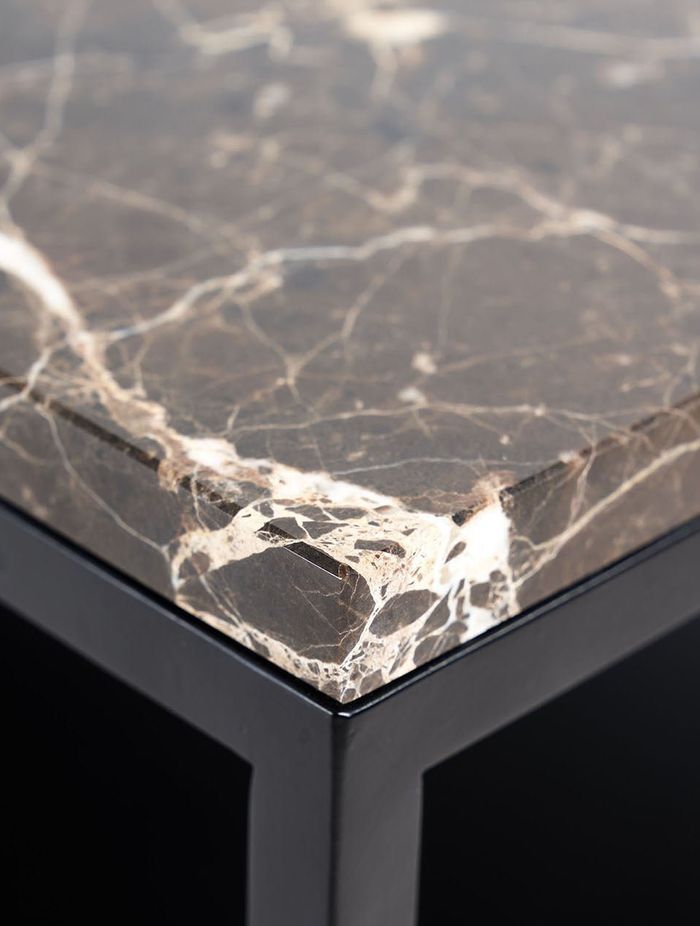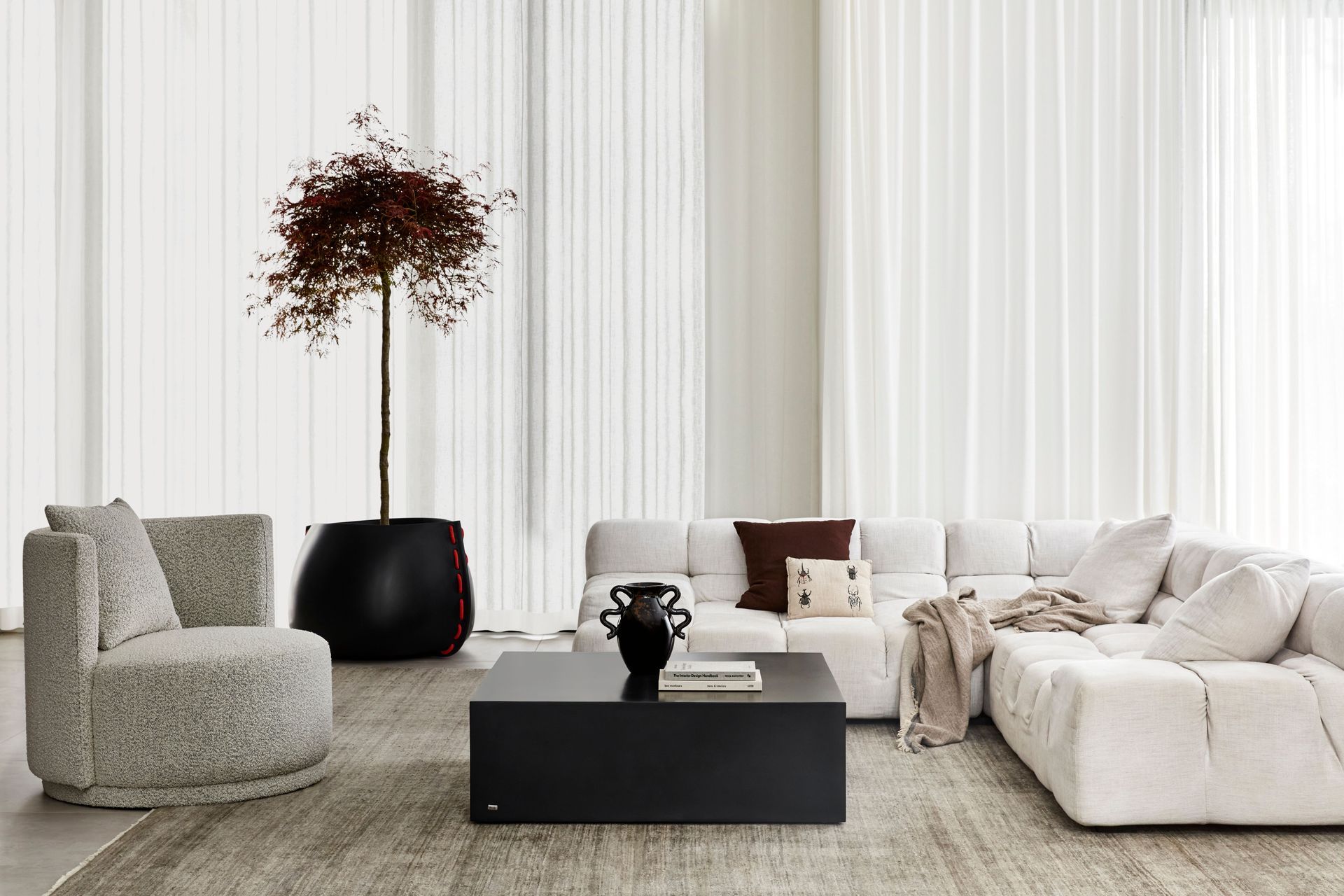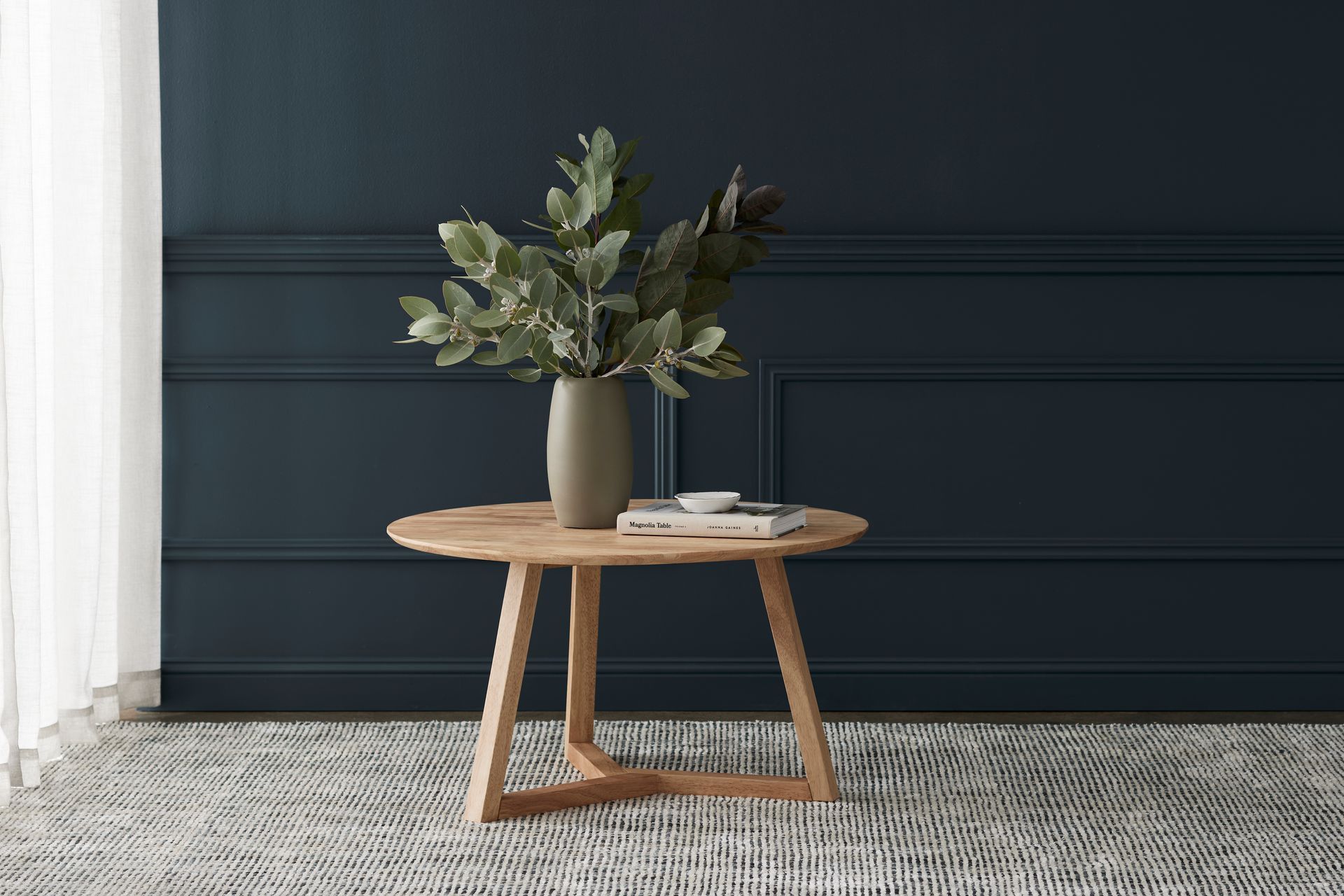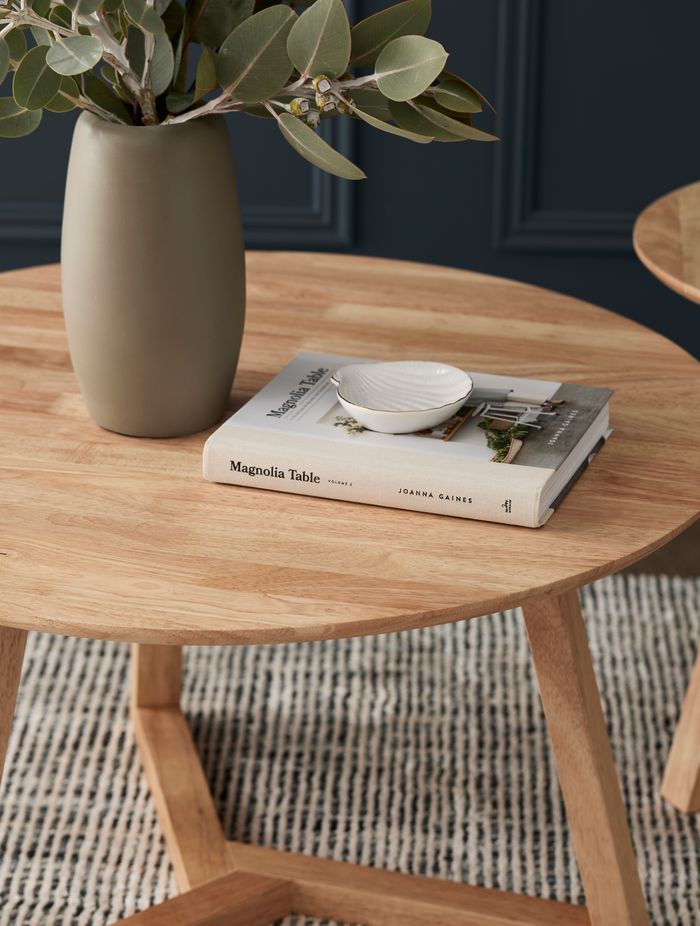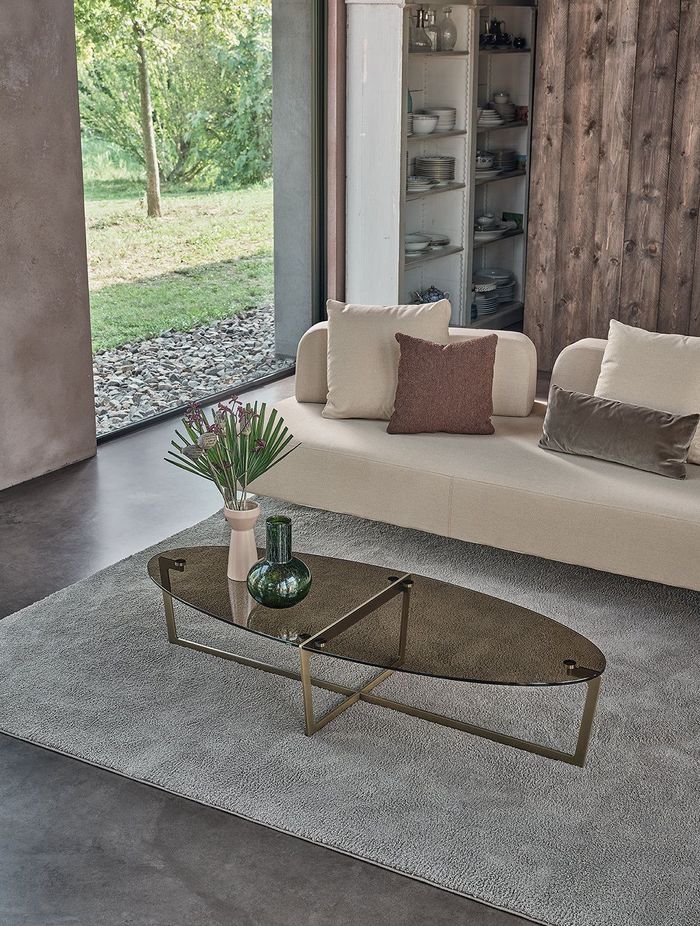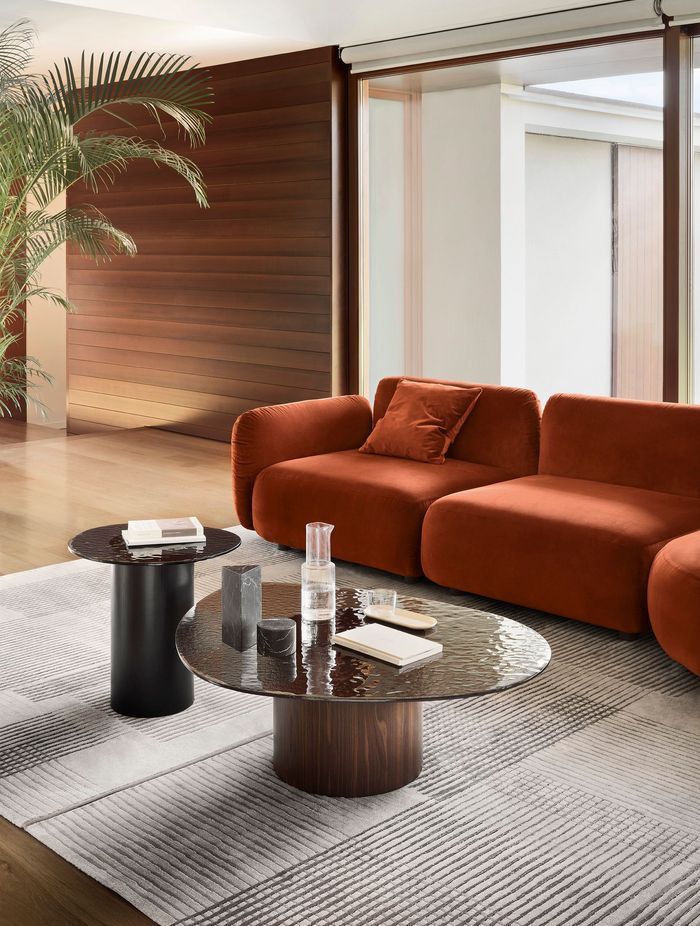14 types of coffee tables: All the best options for your home

To highlight the diverse range available, we’ve covered a wide range of designs and grouped them by material, shape and application to provide you with plenty of ideas for how you can use it as a functional, yet stylish piece of decor, no matter your taste.
Coffee table materials
Coffee tables are frequently categorised by their material, which often plays a central role in their design. Here's a look at some of the different materials:
1. Marble coffee tables
Marble coffee tables are a timeless addition to any living space. Their unique, natural designs in the stone ensure that each table is practical yet also acts as a piece of art and centrepiece in both modern and traditional homes. Their sturdy nature means they're built to last, and with a little care, they retain their beauty for years to come.
2. Concrete coffee tables
Concrete coffee tables are a bold choice, synonymous with strength and modernity. Unlike other materials, concrete brings an industrial flair, making these tables both functional and a statement piece. Concrete's raw, textured finish showcases its authenticity, often contrasted beautifully against softer indoor furnishings. The material can also help regulate room temperature staying cool in the heat. Plus, with age, they develop a rich patina that adds character to the table and the overall space.
3. Hardwood coffee tables
Hardwood coffee tables, regardless of the specific tree type, are a testament to nature's artistry. The intricate grain patterns and hues inherent in hardwoods bring a unique design to each table. These tables reveal a mature appearance as they age, adding depth to their character.
Each table's design is distinct, marked by its specific grain and texture nuances that celebrate the authenticity of natural wood. Their solid construction promises longevity, making these tables not just decorative centrepieces but also enduring elements of a room's design.
Related article: 10 wooden coffee table designs and how to use them best
4. Glass coffee tables
Glass (or glass topped) coffee tables, with their sleek transparency, give rooms a spacious feel. This clarity allows them to make areas look more open, avoiding the heaviness that some tables can introduce. Often crafted from tempered glass, these tables combine style with longevity and are straightforward to clean. Their versatile design complements a range of interior themes.
Features like bevelled edges add to their safety, making them suitable for many homes. Their clear surface is perfect for showcasing beautiful floorings or rugs below, and by reflecting light, they brighten up a room, giving it an airy feeling.
5. Steel coffee tables
Steel coffee tables are grounded in stability and practical purpose while fitting seamlessly into modern settings. Composed of carbon and iron, steel is recognised for its high tensile strength, ensuring these tables withstand scratches and impacts with ease. Their sleek metallic finish is not only contemporary but also resistant to stains and simple to clean with common household products. The inherent density of steel gives these tables stability, even in bustling environments.
Design-wise, steel's versatility allows it to pair effectively with various materials, like the transparency of glass or the warmth of wood. Furthermore, with steel being one of the most recycled materials globally, choosing a steel table is a nod to sustainable living.
Coffee table types by shape
Not only does the material influence the design of a coffee table, but its shape also plays a vital role. Here's an overview of different shapes:
6. Round coffee tables
Round coffee tables are practical for various living spaces. Their edge-free design can be safer, reducing the risk of injury from sharp corners, especially in homes with children. Additionally, their shape allows for easy access from any direction, which can benefit rooms with non-uniform seating arrangements. A round table can also offer a visual contrast to the common angular lines of room furniture, contributing to a balanced room design. They complement various furniture styles, from sleek modern pieces to traditional designs.
7. Barrel coffee tables
Modern coffee tables such as Barrel style options captivate with their unique form that mirrors a classic barrel shape. They boast a sturdy structure, with many made from timber, reminiscent of authentic barrels. However, modern iterations also incorporate materials like brass. Their curved design fits seamlessly in diverse seating layouts, and a bonus is the storage option often found inside the table. True to their origin, these coffee tables frequently display distinct markings, giving each piece its own character and charm.
8. Oval coffee tables
Oval coffee tables, characterised by their elongated curves, offer a refreshing contrast to the typical rectangular or square tables. The rounded design is not only accommodating in various settings, particularly in spaces with constraints, but it also removes the risks associated with sharp corners.
The oval shape promotes a natural flow within room layouts, harmonising with both linear and curved furniture items. This adaptability ensures they're a popular addition for those aiming to optimise space in their living areas.
9. Square coffee tables
Square coffee tables present a balanced and symmetrical design suitable for various spaces. Their equal proportions offer a generous surface, ideal for displaying decor or holding daily essentials. The four equal sides introduce order and structure in a room, often anchoring the seating arrangement.
Their straightforward geometry facilitates easy alignment with other furniture pieces. Many square coffee tables also feature practical storage options like shelves or drawers. Choosing a square coffee table ensures a versatile piece that can adapt to and enhance multiple interior styles.
10. Rectangular coffee tables
Rectangular coffee tables feature an elongated surface, making them ideal for longer sofas or expansive seating areas. Their form serves as a unifying element, connecting different furniture pieces and defining seating zones. The extended shape provides ample space for various items, from decorative pieces to everyday essentials. The linear design of these tables aids in maintaining organised displays and arrangements.
Often a rectangular coffee table will also incorporate added storage solutions, such as shelves or drawers, making these tables particularly good choices for smaller spaces.
11. Mushroom coffee tables
Mushroom coffee tables are as the name implies modelled after the shape of mushrooms. The typical tabletop has a 'mushroom head' or rounded appearance and often comes in materials such as glass, wood, or marble, among others. The tabletop is supported by a central base or stem, usually constructed from wood.
The mushroom-inspired form gives these tables a unique look and style from conventional coffee tables, and an interesting choice for homeowners.
Coffee table designs by application
Finally, some types of coffee table are determined by their intended use and application, here are some of them:
12. Outdoor coffee tables
Outdoor coffee tables are specially designed to endure the elements whilst enhancing outdoor areas. Constructed from hard-wearing materials such as teak, metal, resin, or rattan, they stand up to the challenges of changing weather conditions. Their build often incorporates features for rainwater drainage and resistance to UV rays. The design of outdoor coffee tables is typically robust, emphasising tenacity and sturdiness.
Available in a range of finishes and styles, they complement the aesthetics of patios, terraces, or garden settings. Beyond their functional use, these tables act as focal points for gatherings, barbecues, or peaceful outdoor moments.
13. Tray coffee tables
Tray coffee tables are designed with raised edges, drawing inspiration from traditional trays. This design not only adds to the visual appeal but also significantly reduces the likelihood of spills or items being accidentally pushed off. Many of these tables feature a detachable tray top, allowing for easy transport of items or versatile room styling.
The choice of materials, such as wood, metal, and glass, ensures durability while allowing homeowners to select a table that aligns with their interior décor, whether it be a sleek modern space or a room with classic details and features.
14. Two-tiered coffee tables
Two-tiered coffee tables feature both an upper and lower surface, doubling the available space of standard tables. This layered design allows users to organise items more efficiently, such as storing reading materials on the lower shelf while reserving the top for beverages or snacks. The inclusion of an additional level also introduces architectural interest, offering a dynamic alternative to traditional flat-surfaced tables. Such tables are especially favoured in homes where space efficiency is key or where a distinctive table design is favoured.
Which coffee table is right for you?
As you can see, there are plenty of different coffee table designs available to suit a wide range of style preferences, and hopefully this compilation has sparked new ideas and will ultimately simplify the process of selecting the perfect coffee table for your space.


